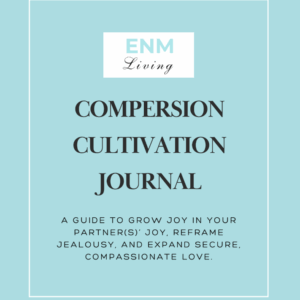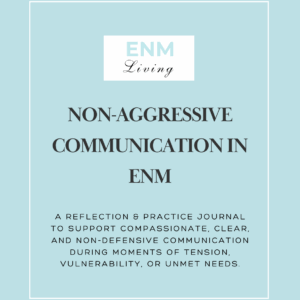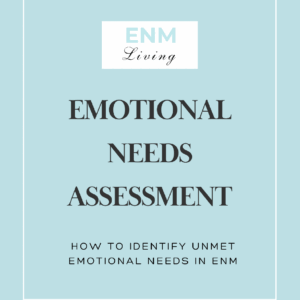Ethical Non-Monogamy Boundary Checklist
A 22-Page Guided Worksheet for Clarity, Confidence, and Respect
Navigating Ethical Non-Monogamy requires clear communication, trust, and well-defined boundaries. Without them, relationships can become overwhelming, leading to misunderstandings and emotional strain.
🌿 What’s Inside?
This comprehensive checklist and reflection tool will help you:
- Identify personal boundaries for self-care and emotional balance
- Establish relational expectations around communication, time management, and emotional needs
- Explore sexual boundaries to ensure comfort, safety, and mutual consent
- Improve communication by expressing your needs while honoring your partners’ boundaries
Each section includes thoughtful prompts to help you reflect deeply and establish clear boundaries that align with your needs, values, and relationship agreements.
💡 Why This Checklist is Important
Boundaries are essential for maintaining healthy, fulfilling relationships in ENM. Without clear boundaries, misunderstandings and emotional challenges can arise. This checklist provides a structured way to assess, adjust, and communicate your boundaries, so you can:
- Build trust and mutual respect with your partners
- Reduce conflict and emotional burnout
- Feel secure and confident in your ENM journey
- Create intentional, fulfilling relationships based on honesty and consent
🩵 Perfect for You If You’re:
- Looking to navigate ENM with confidence and clarity
- Wanting to improve communication around needs and expectations
- Seeking a structured approach to defining personal and relational boundaries
- Committed to building healthy, respectful, and fulfilling ENM relationships
Whether you’re solo-poly, in a polycule, or exploring non-monogamy with a partner, this checklist will help you create a strong foundation for your relationships.
Get Your Copy Now!
Take the next step in your ENM journey by setting healthy, intentional boundaries.
Download the ENM Boundary Checklist today and start building relationships rooted in trust, communication, and mutual respect!




